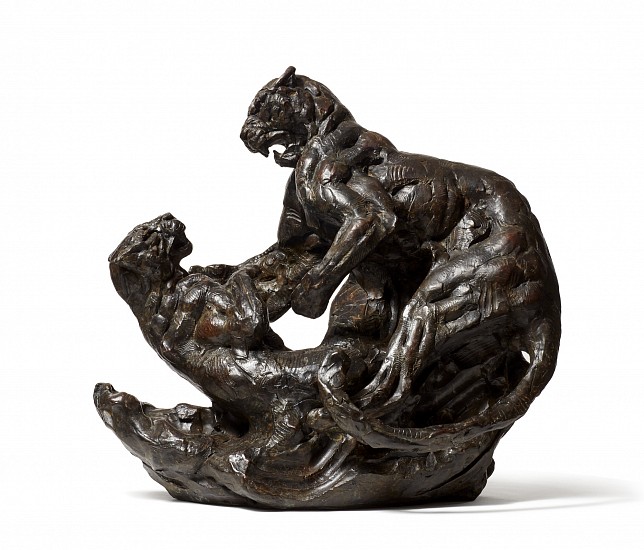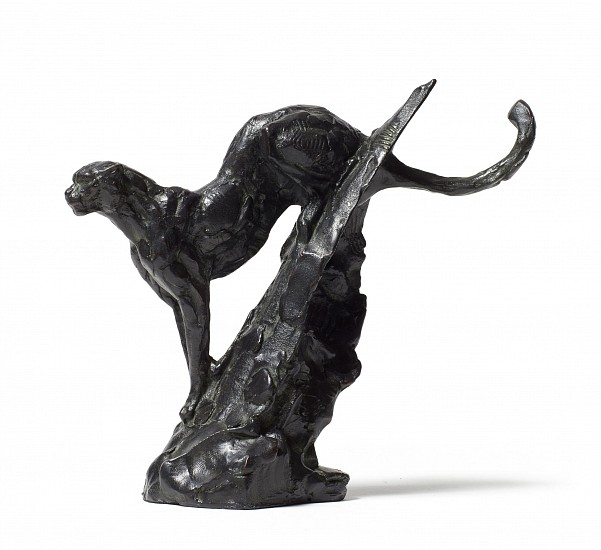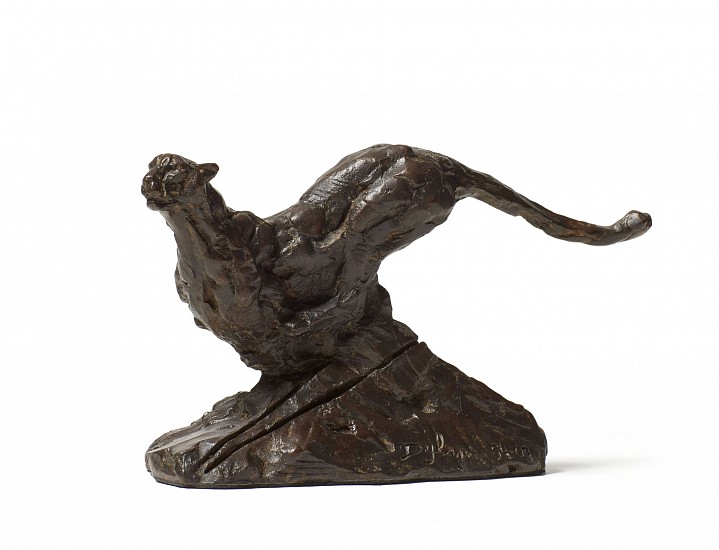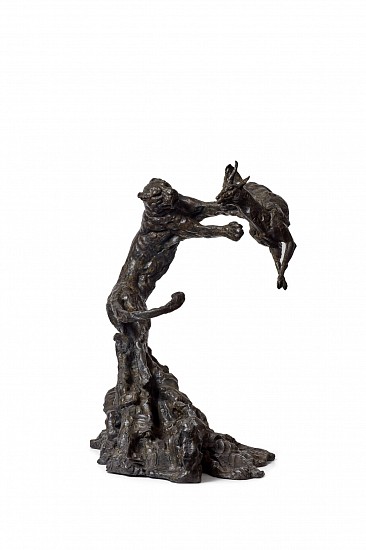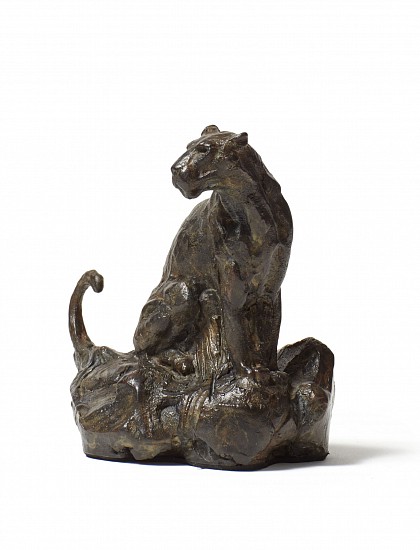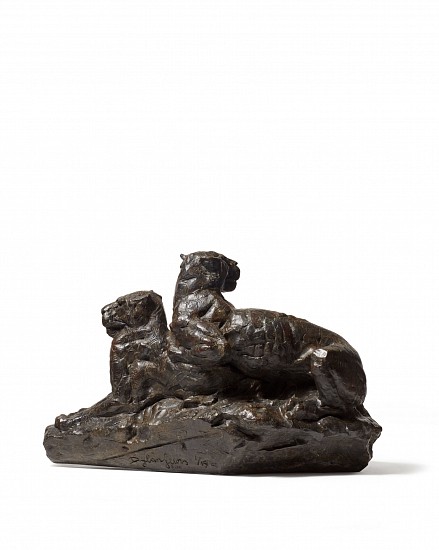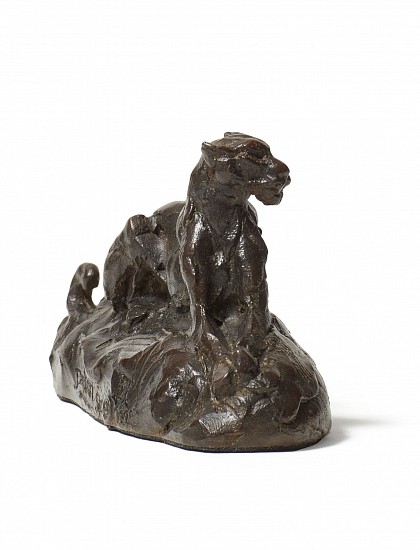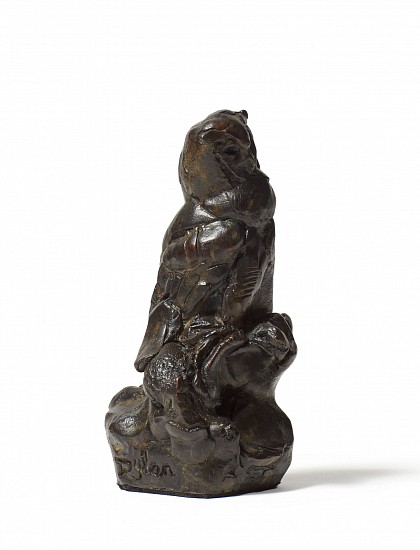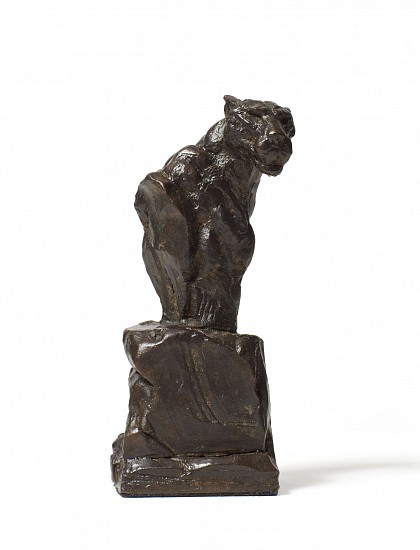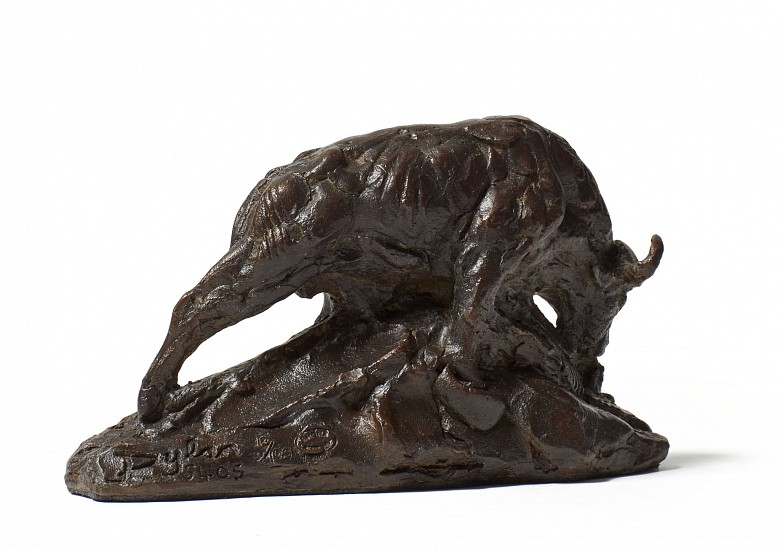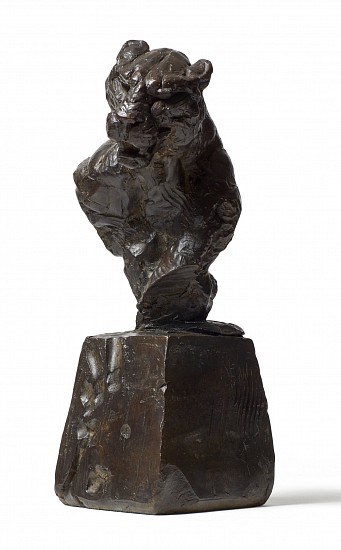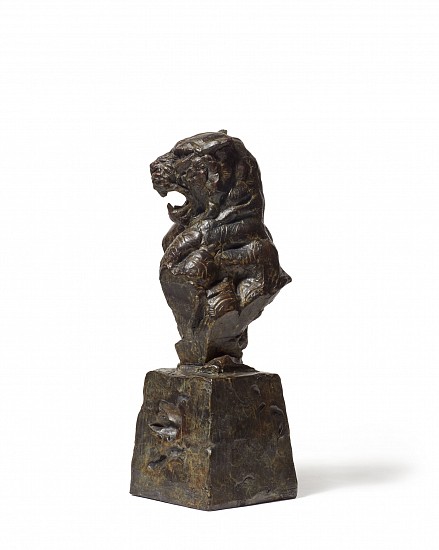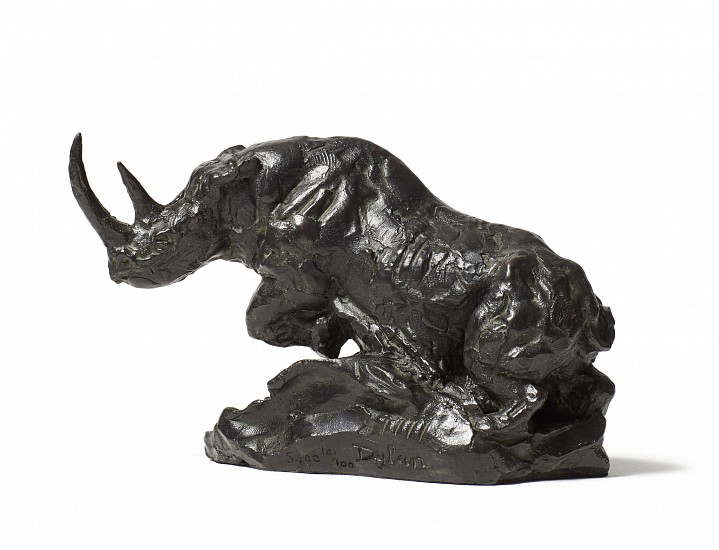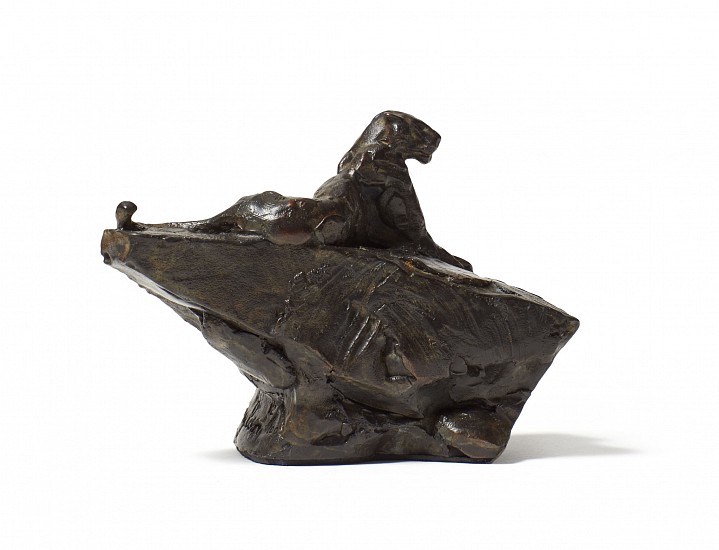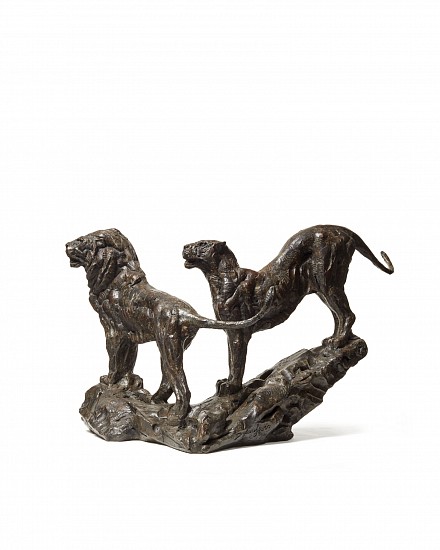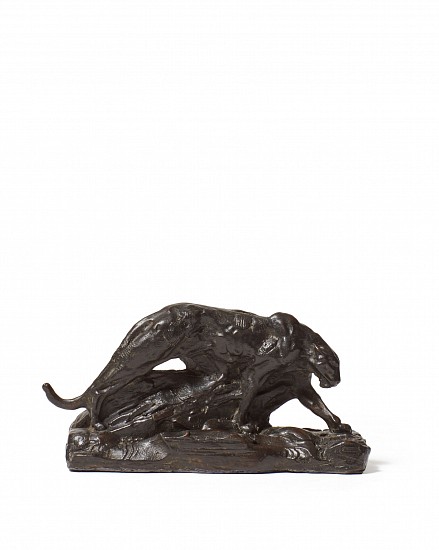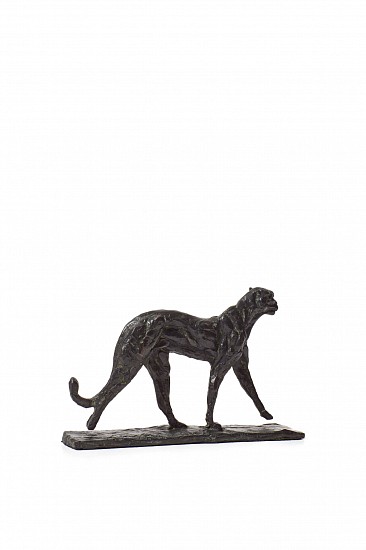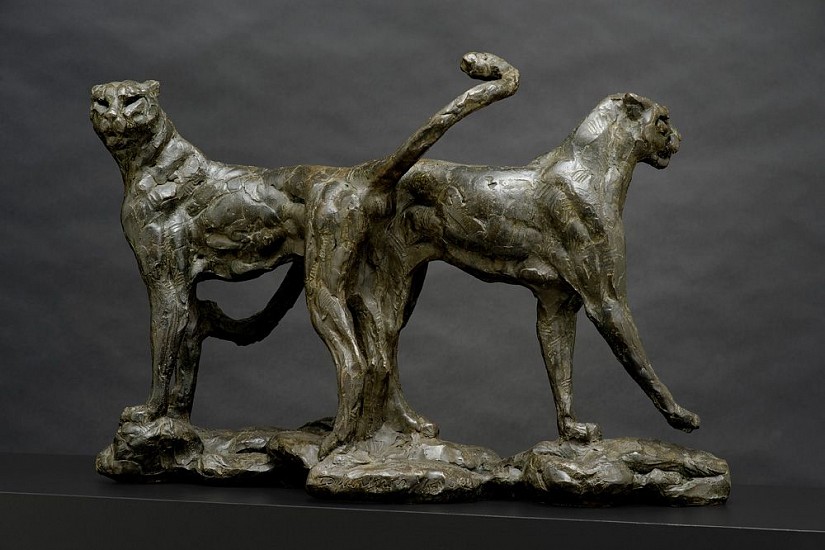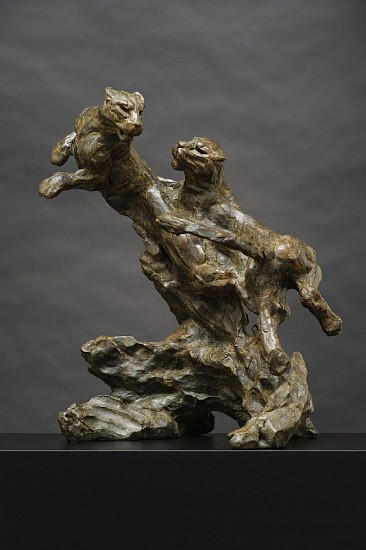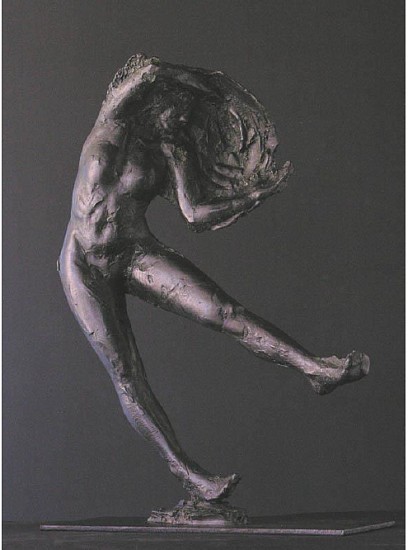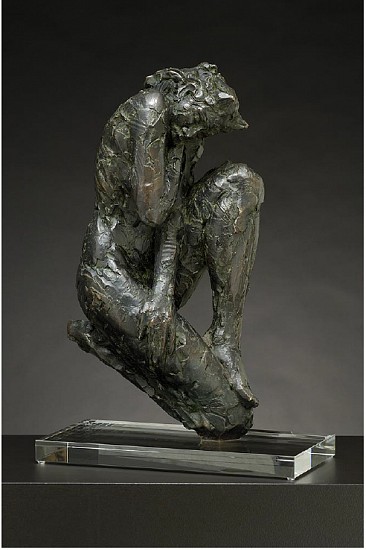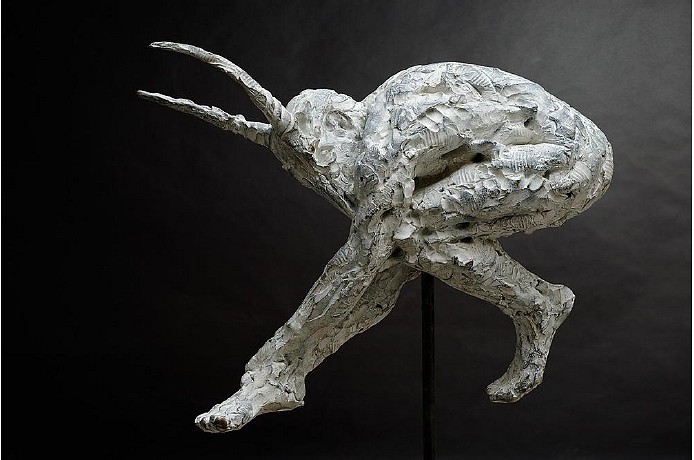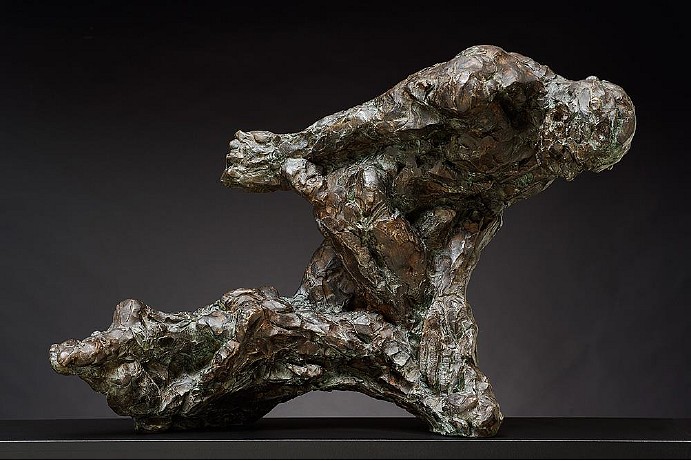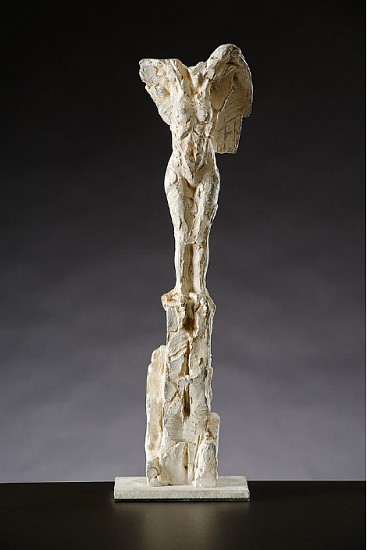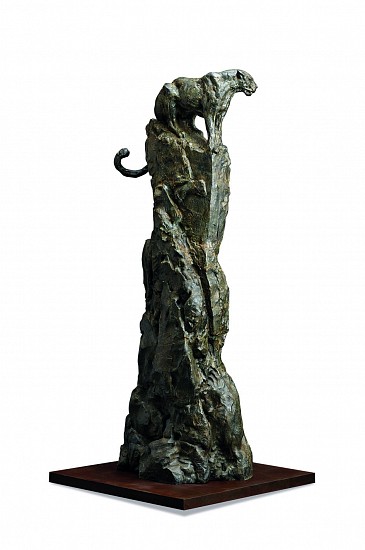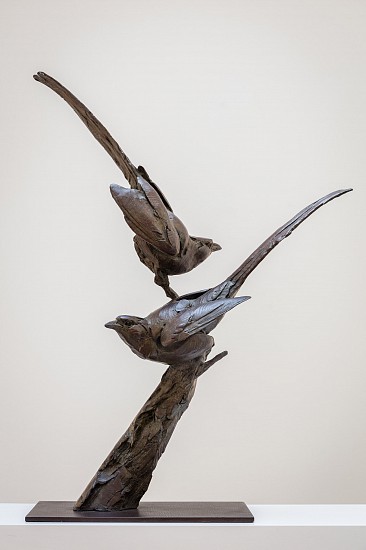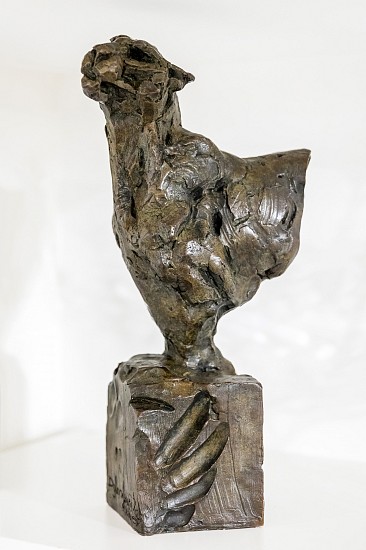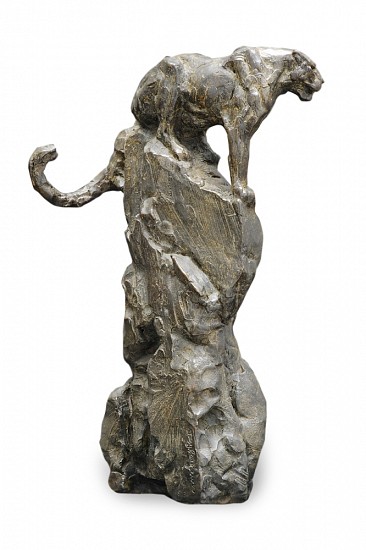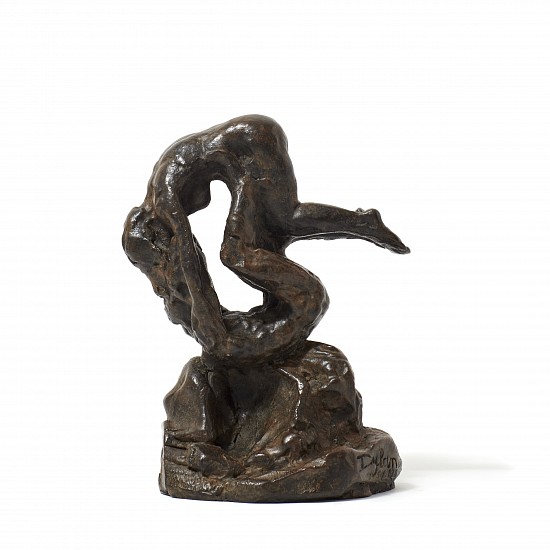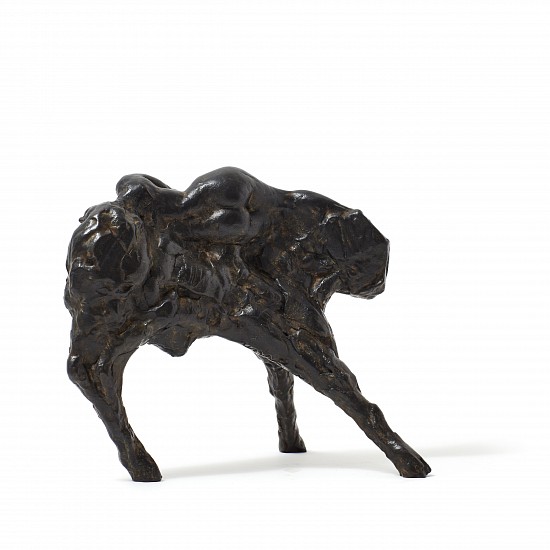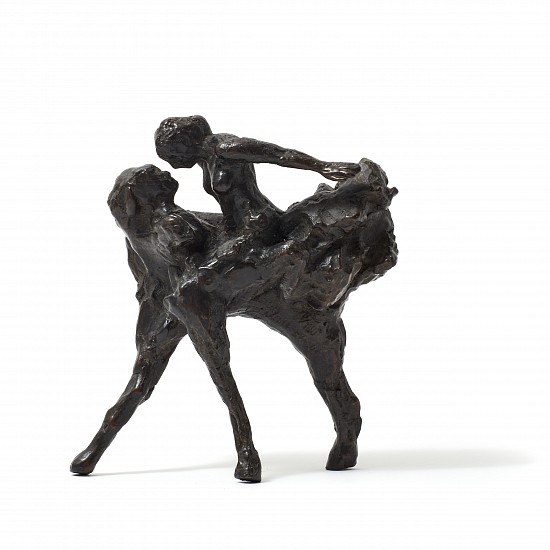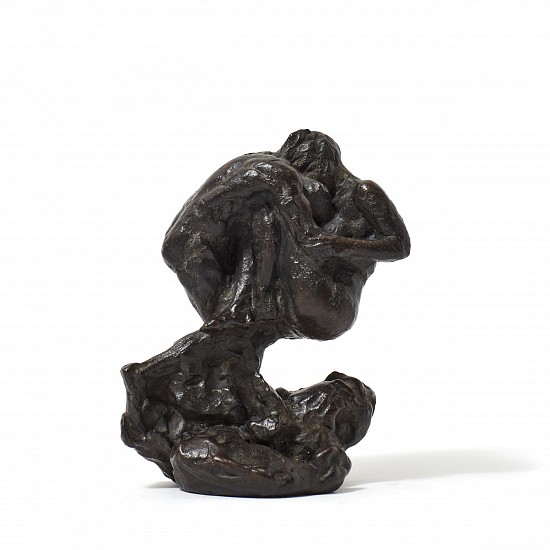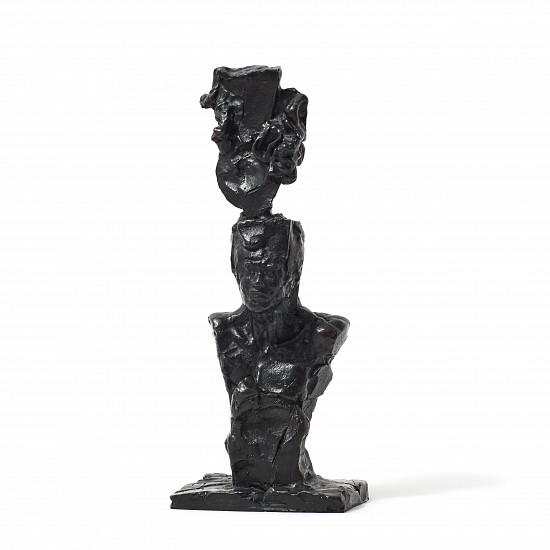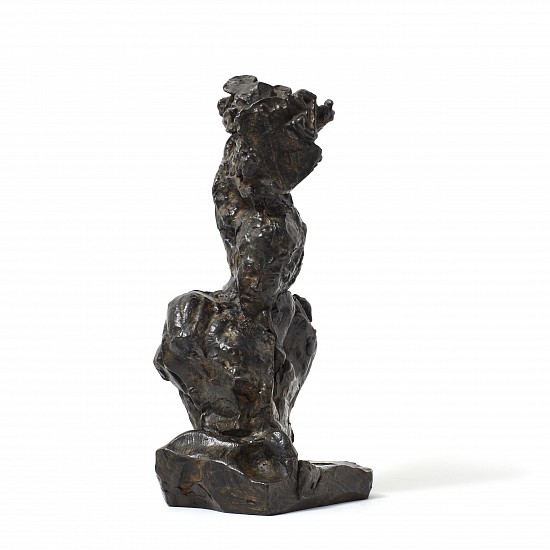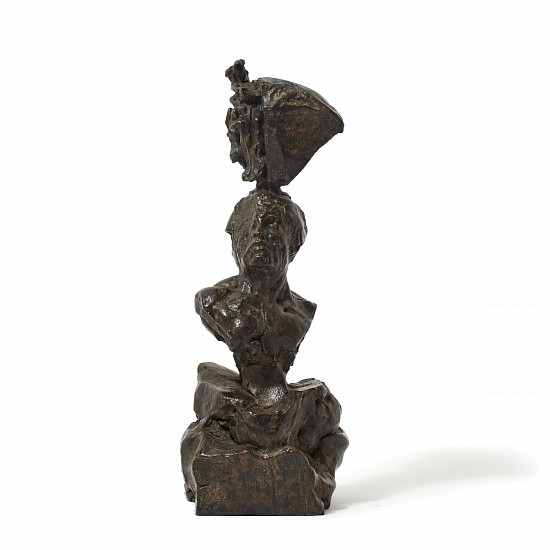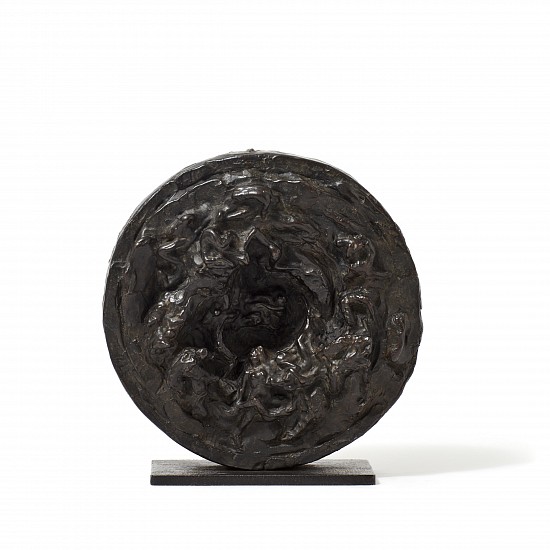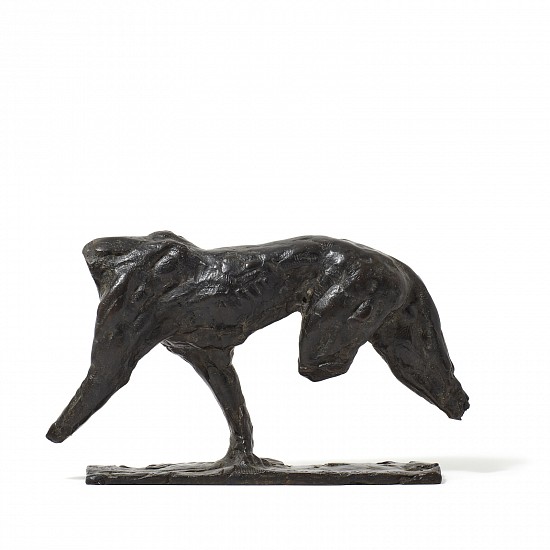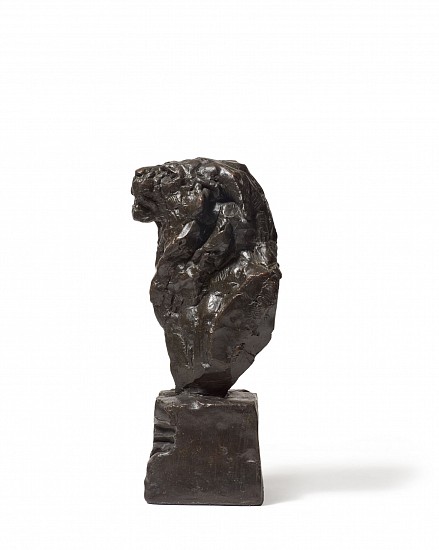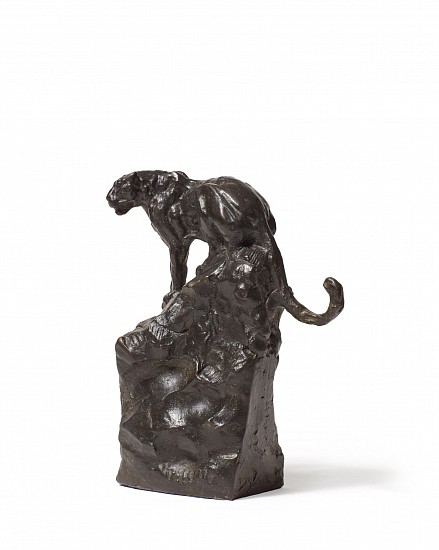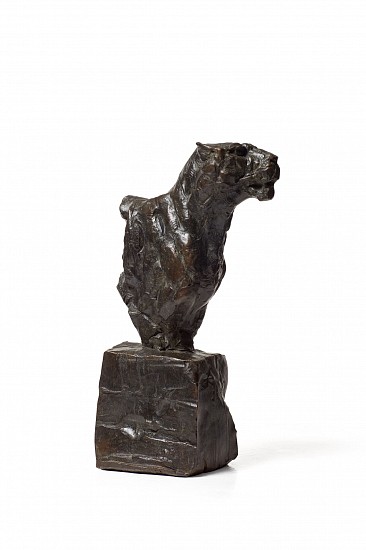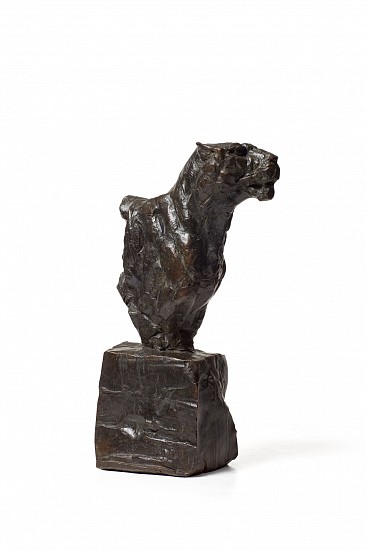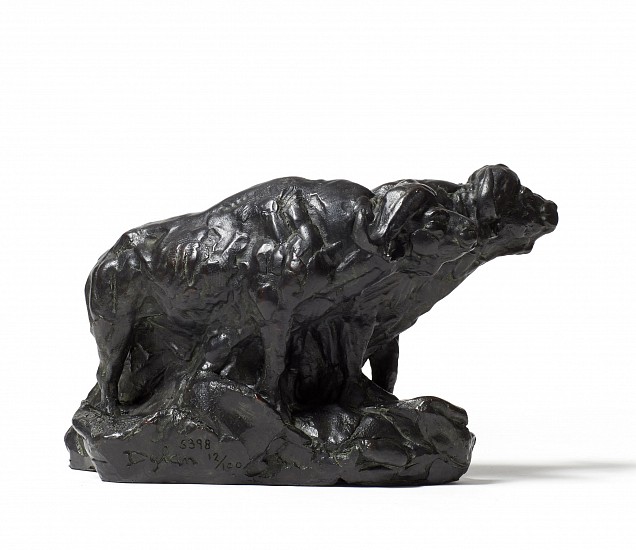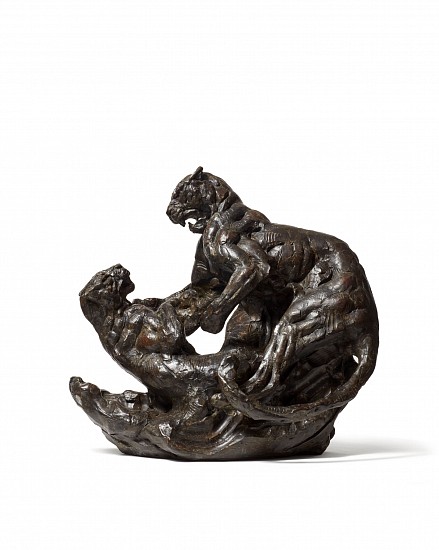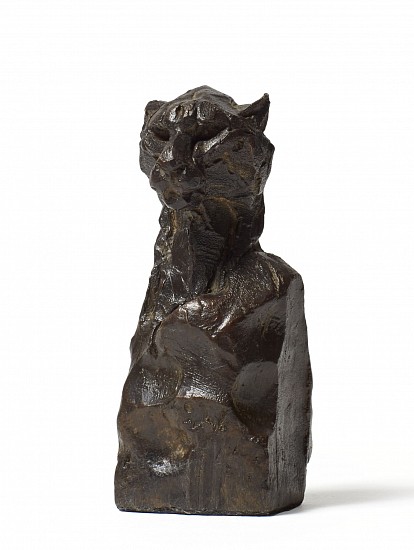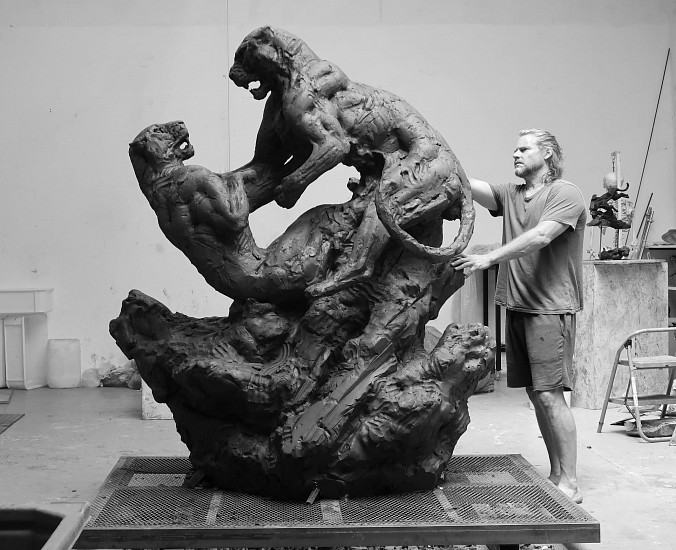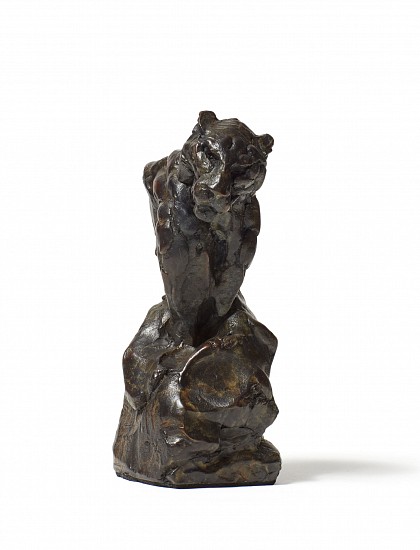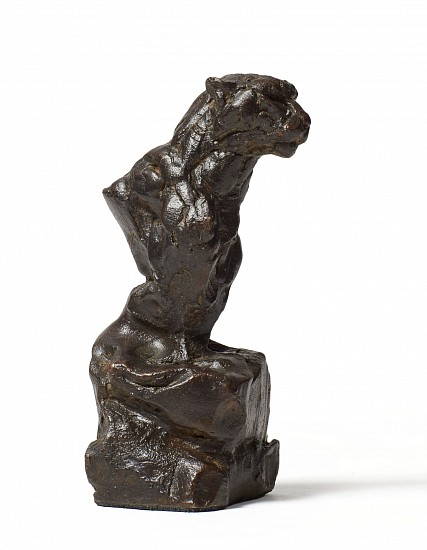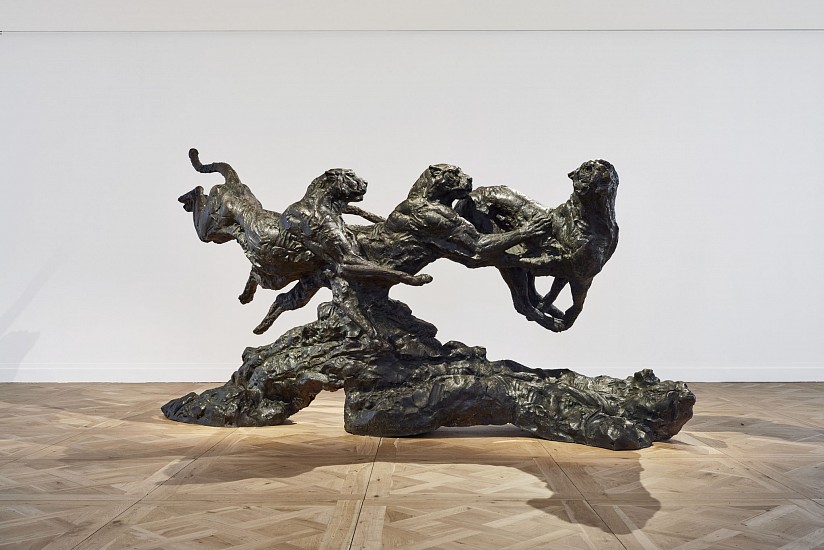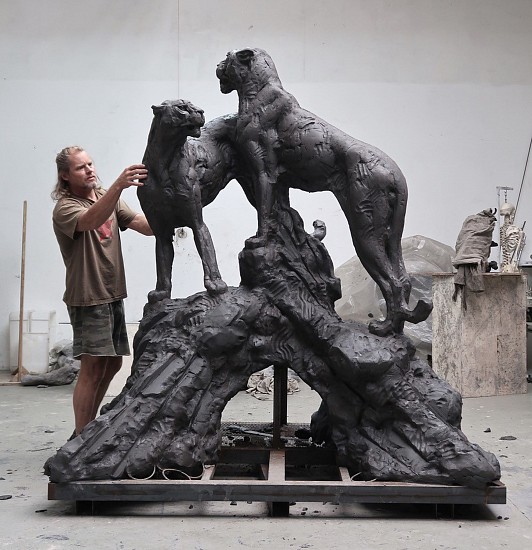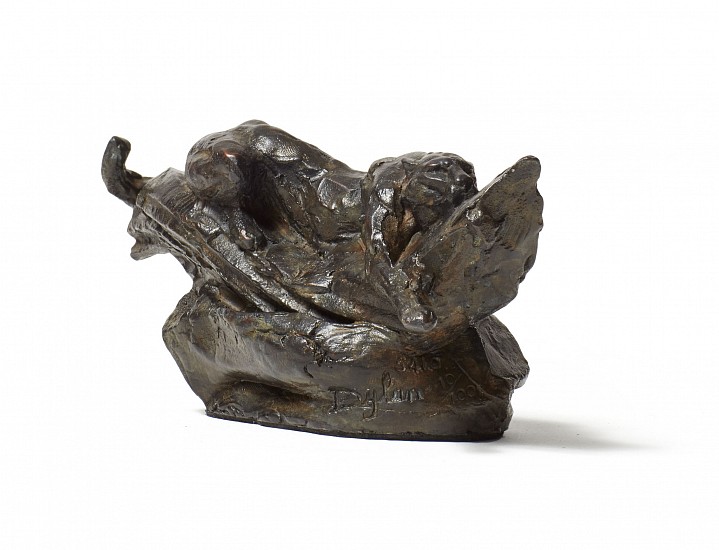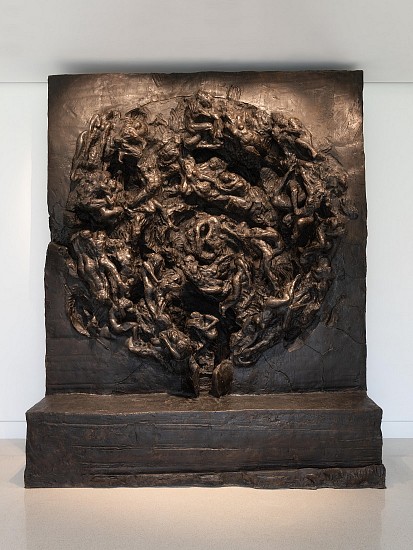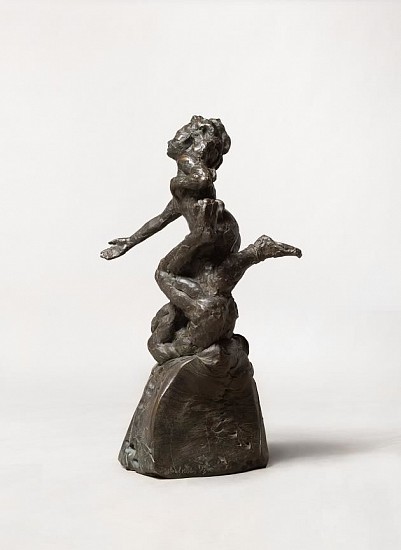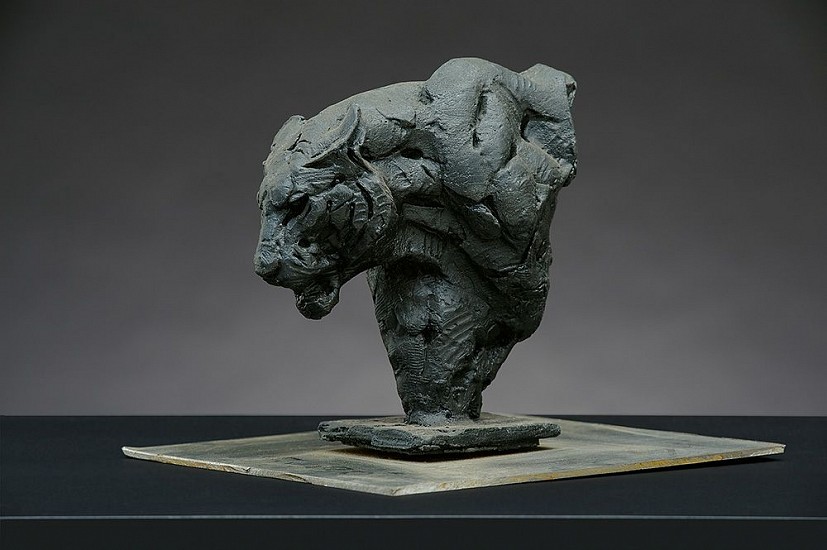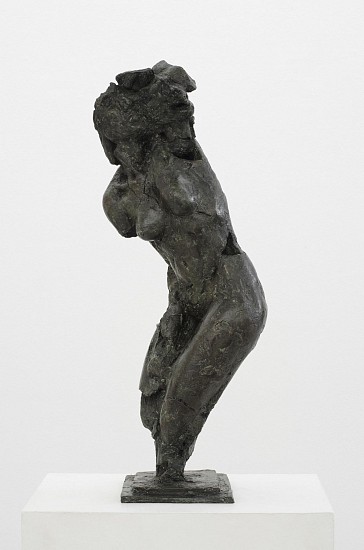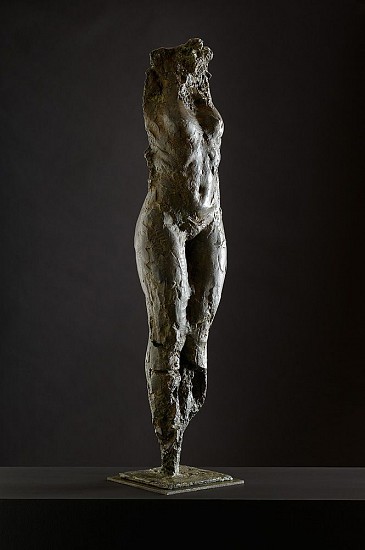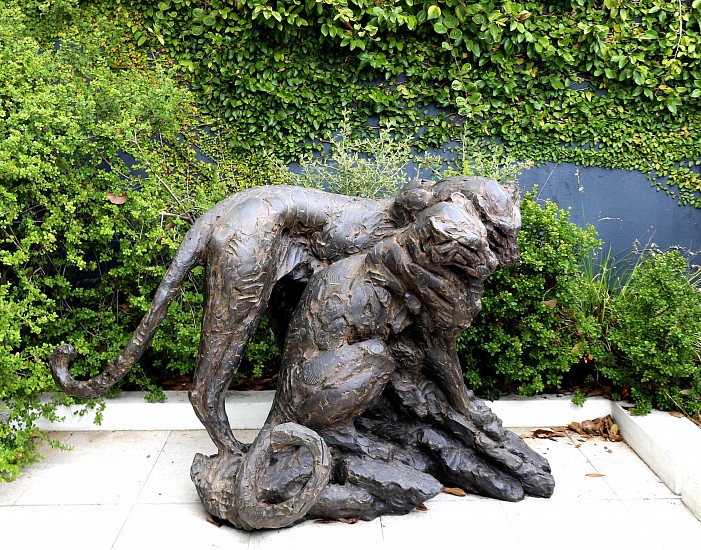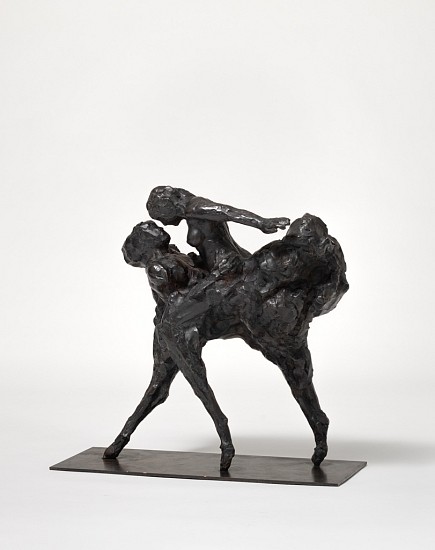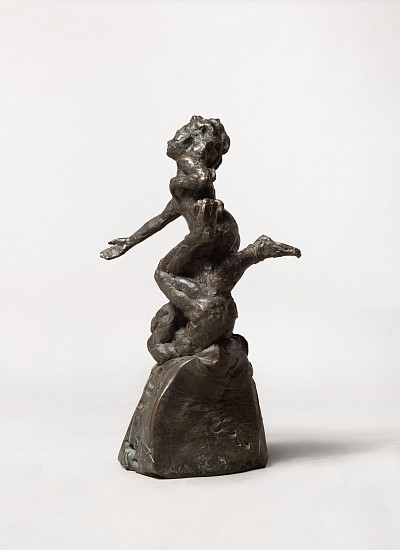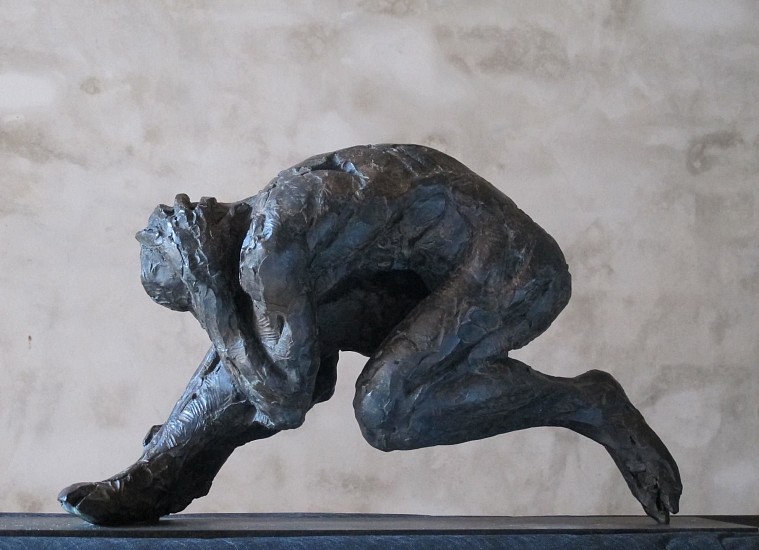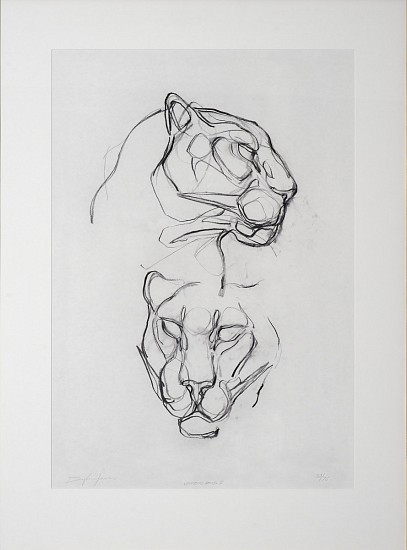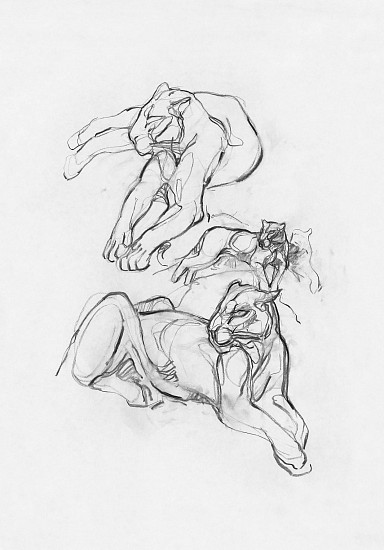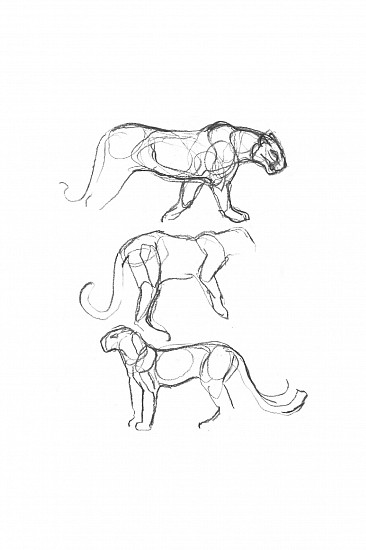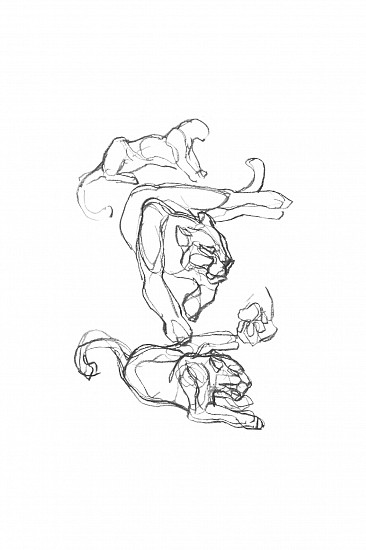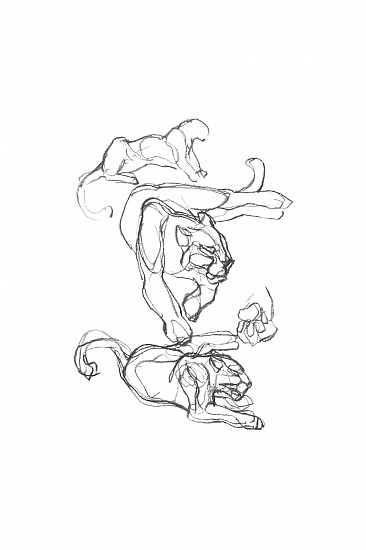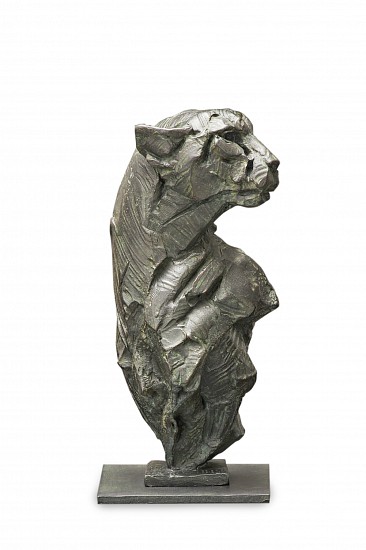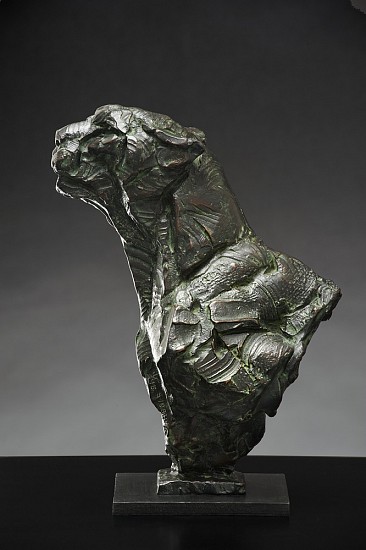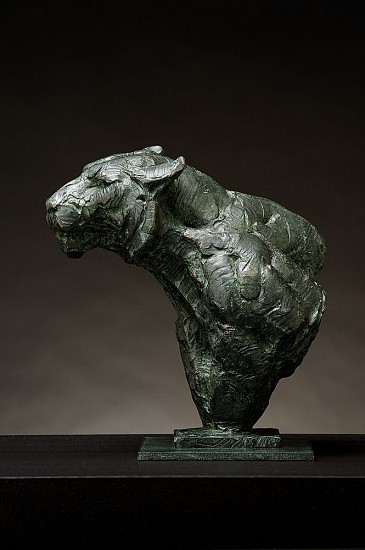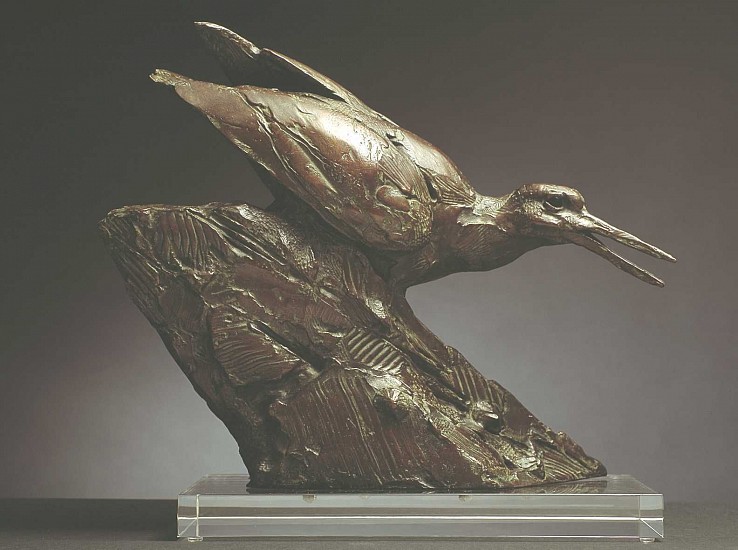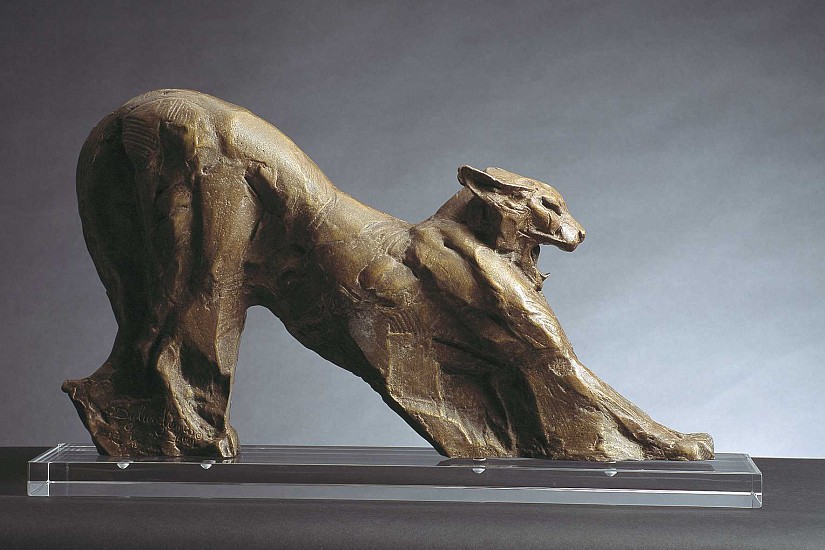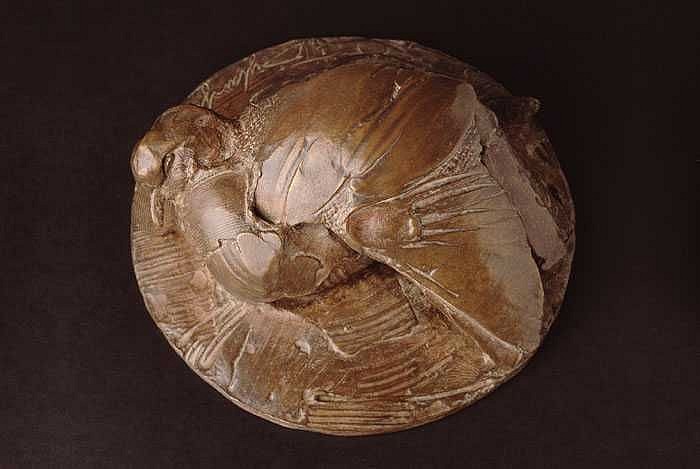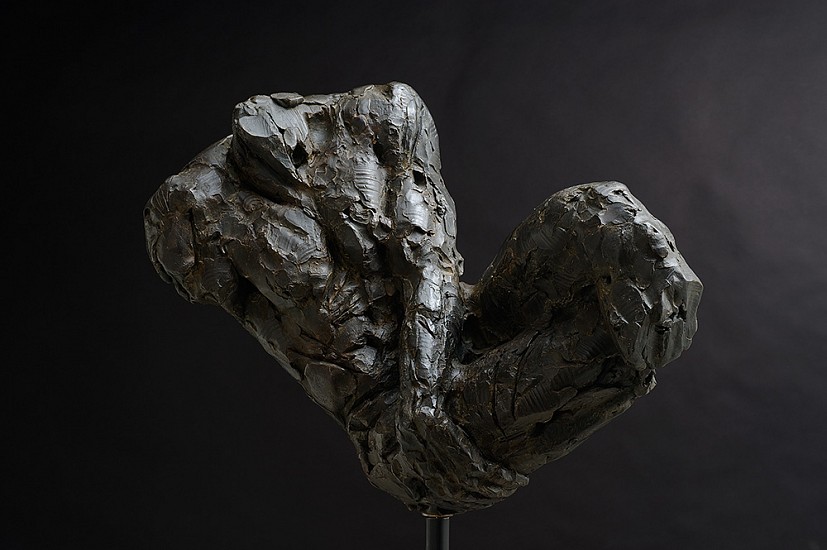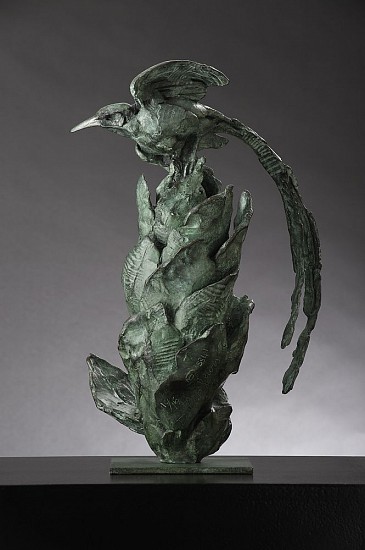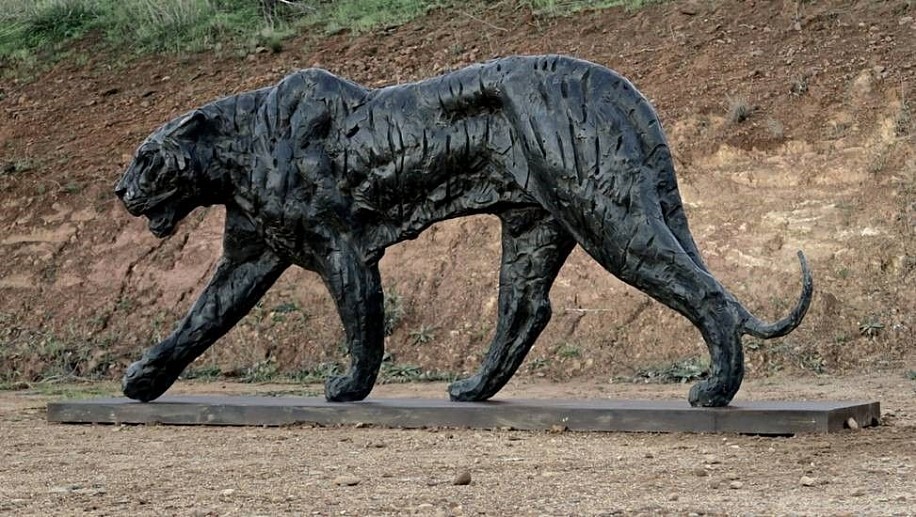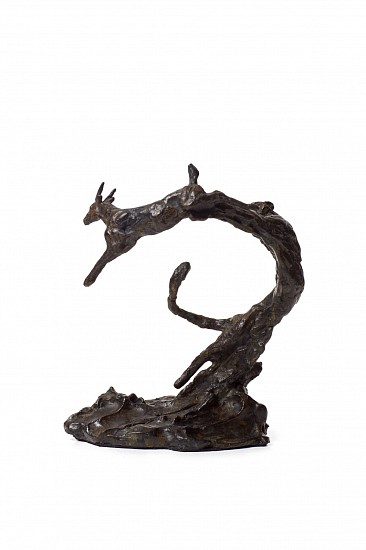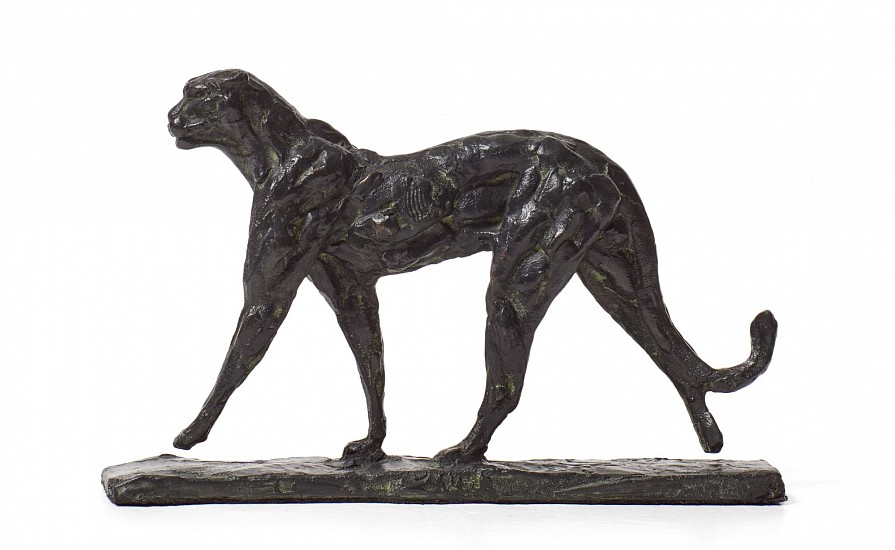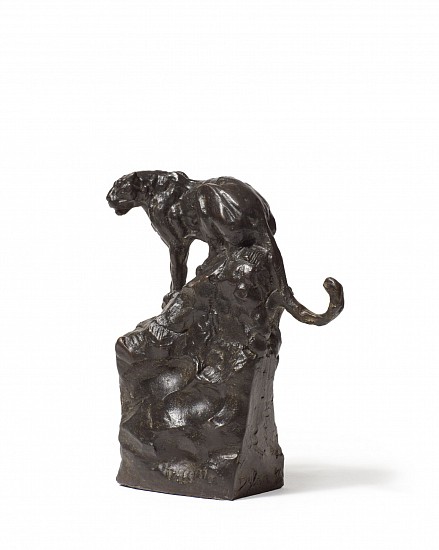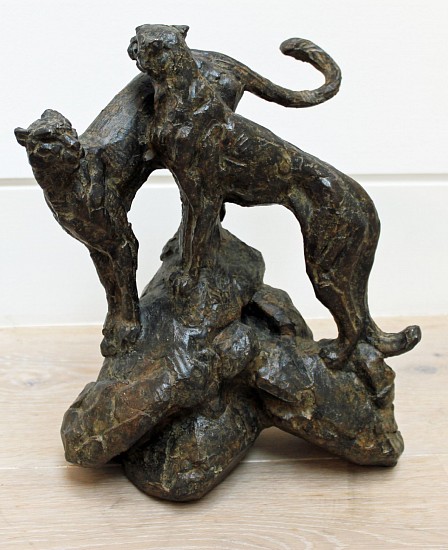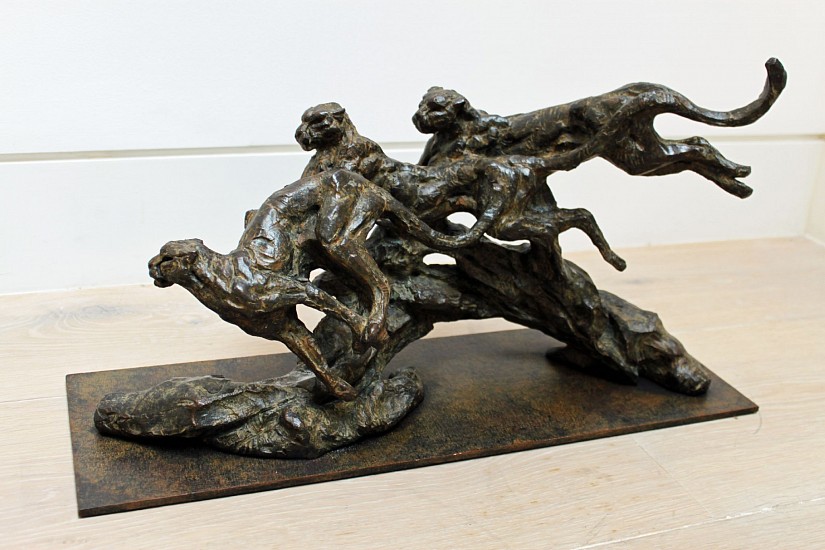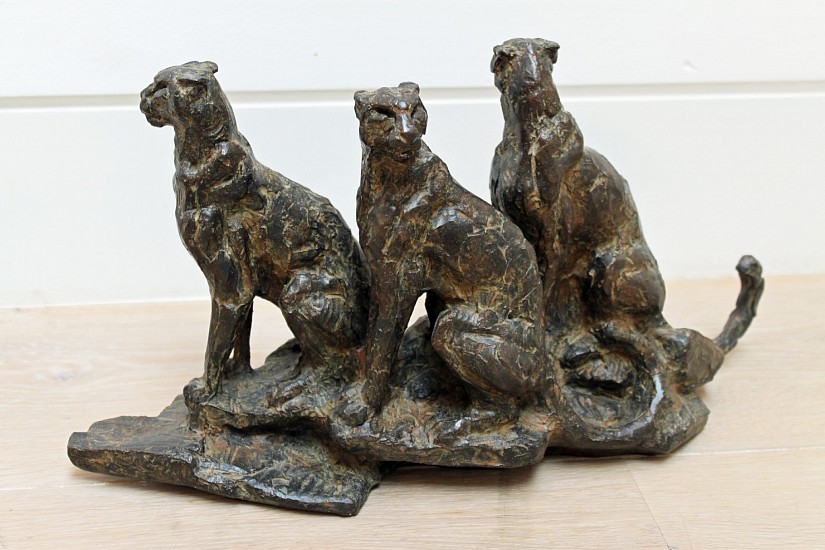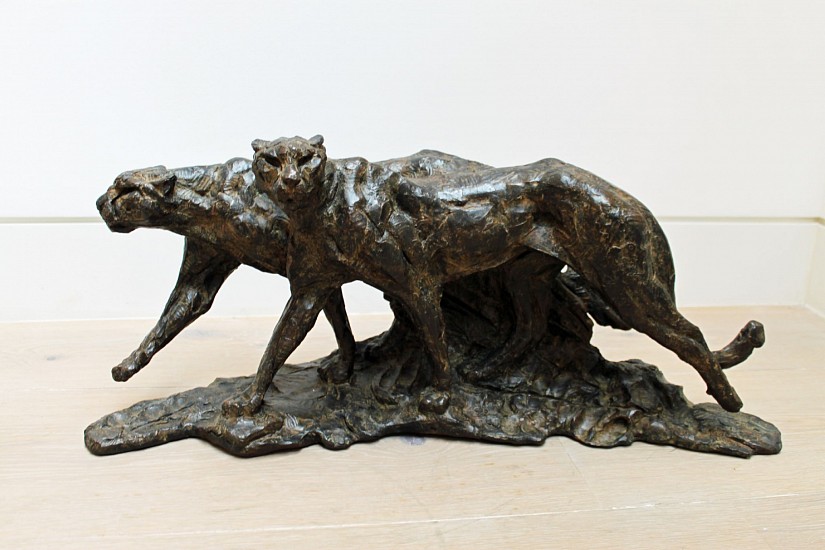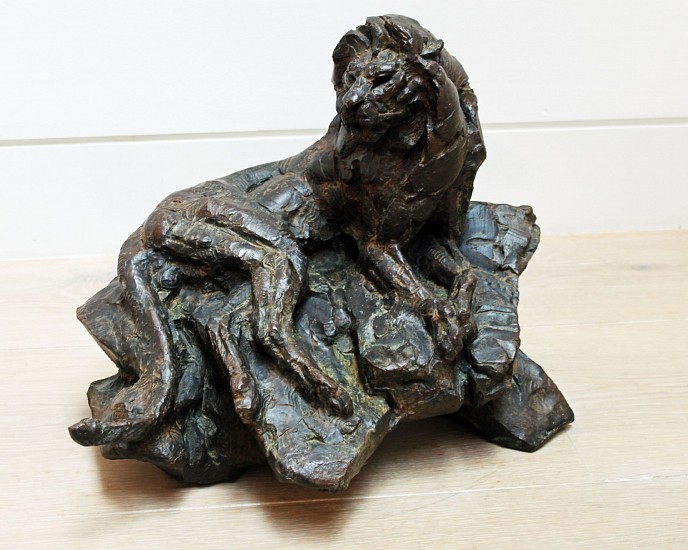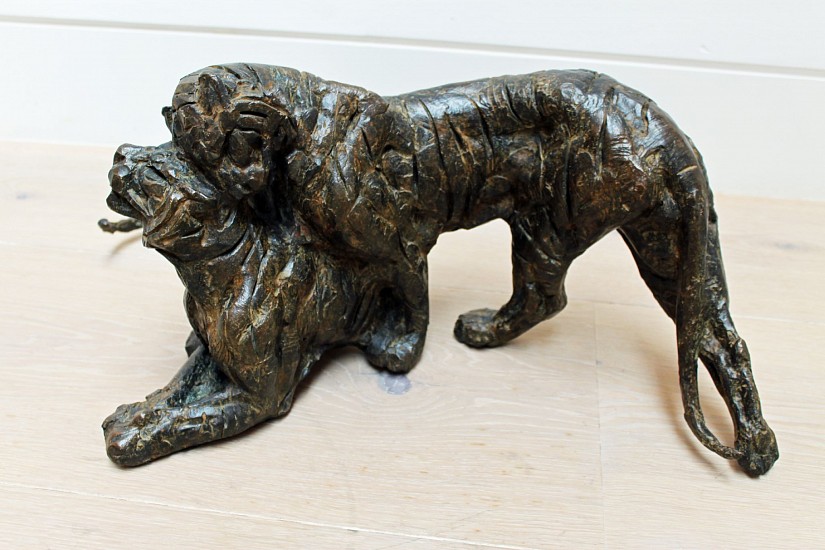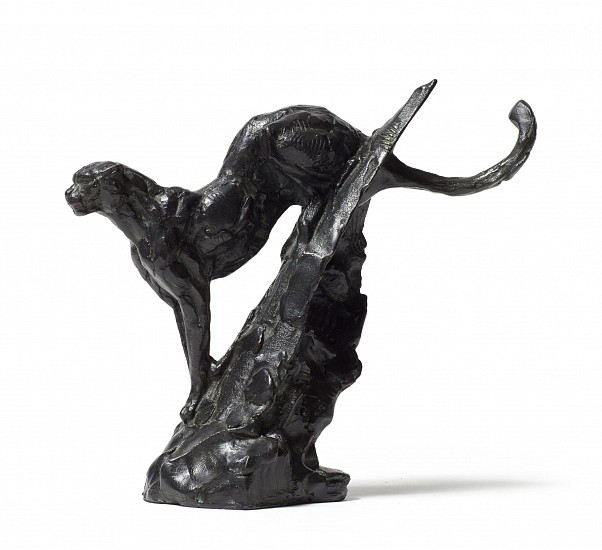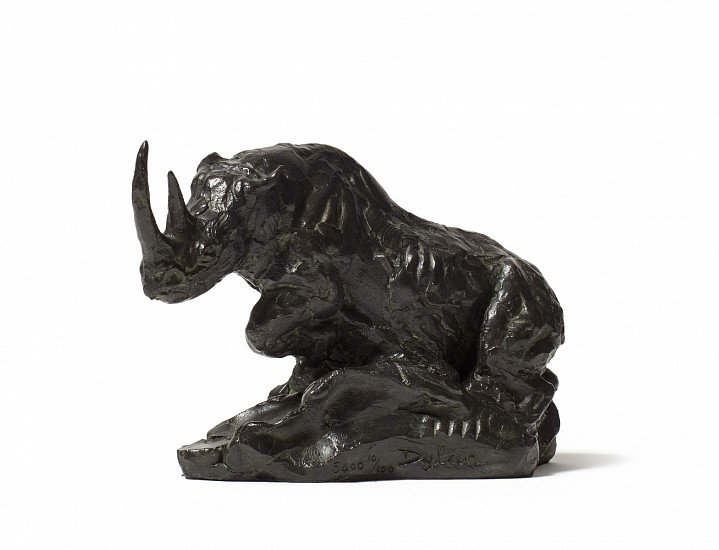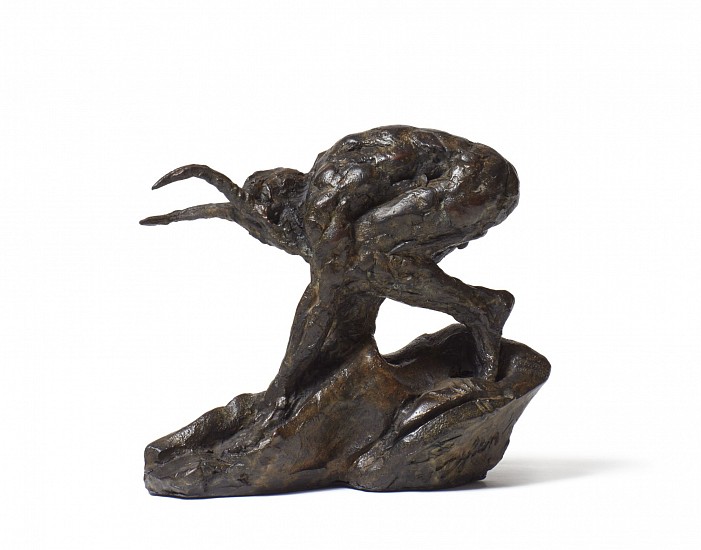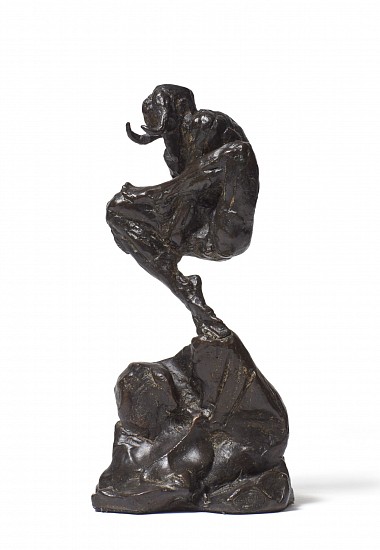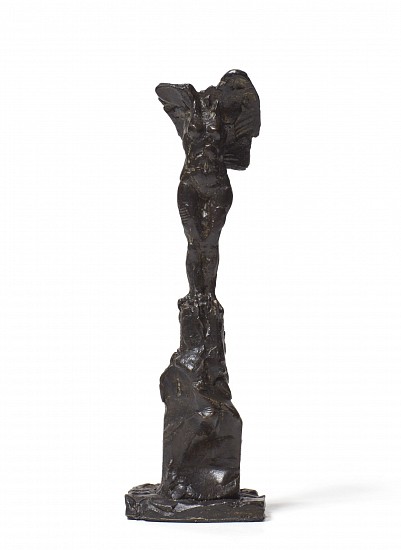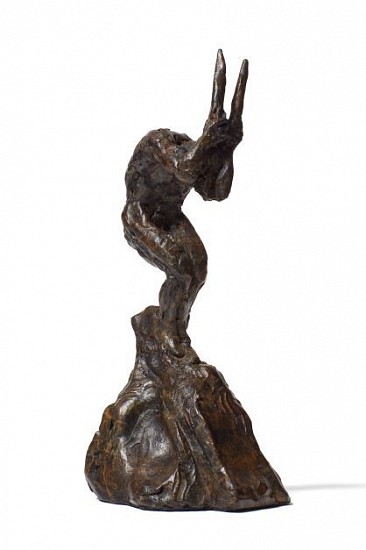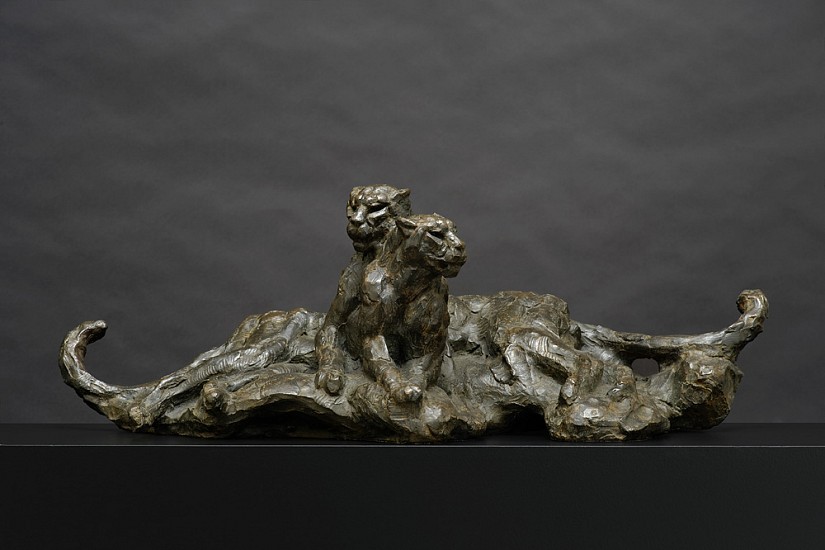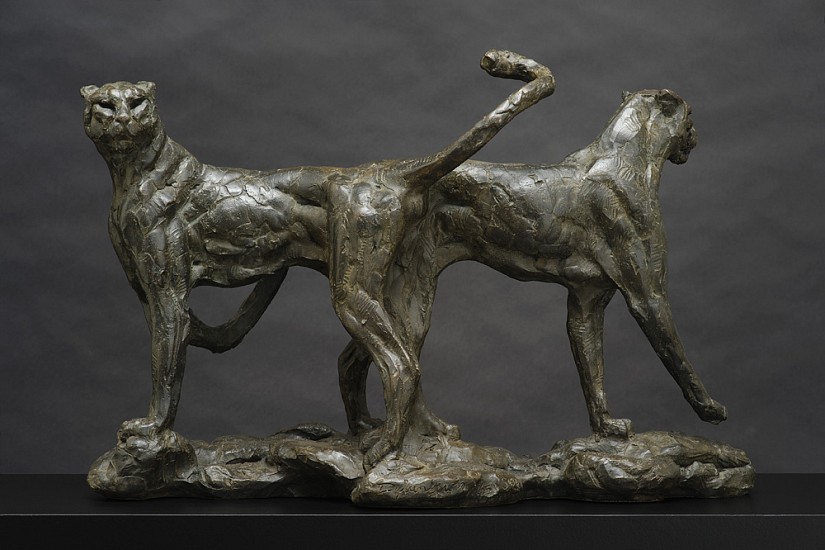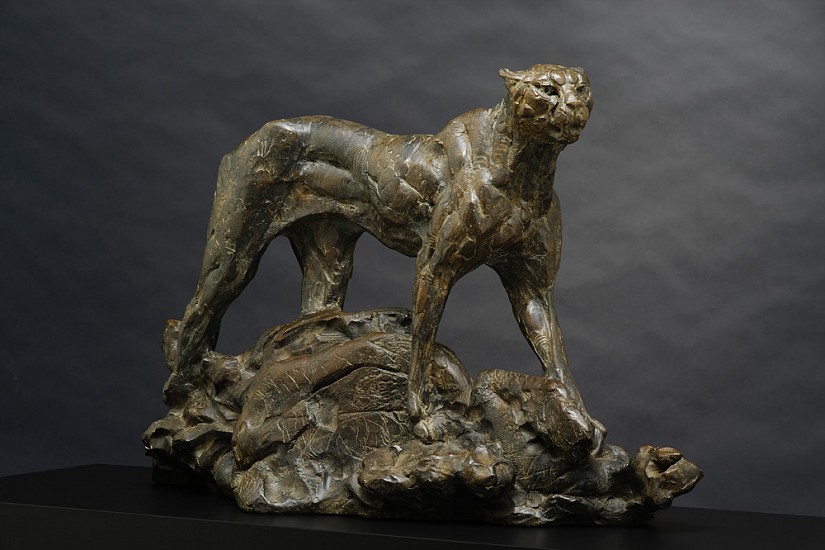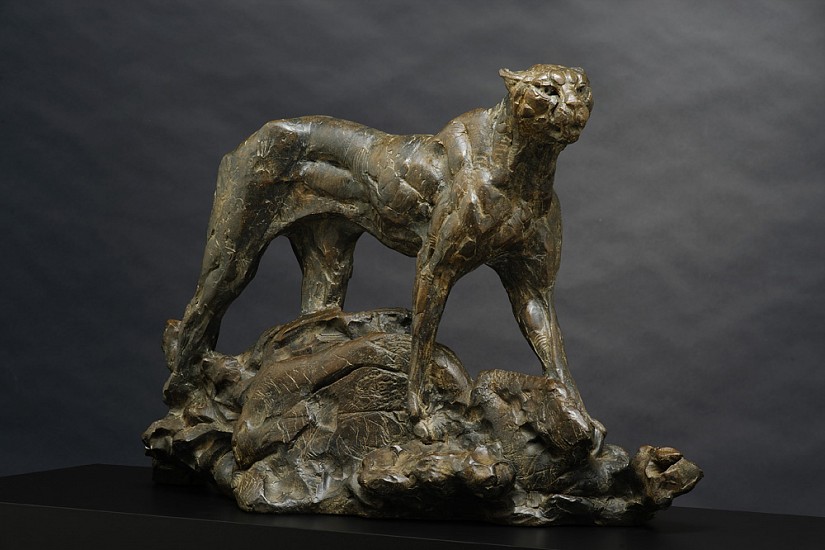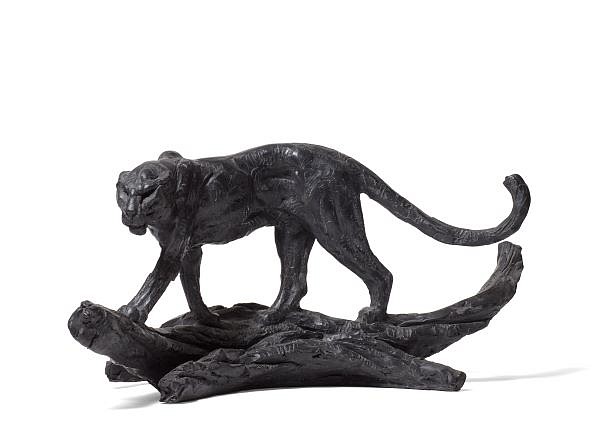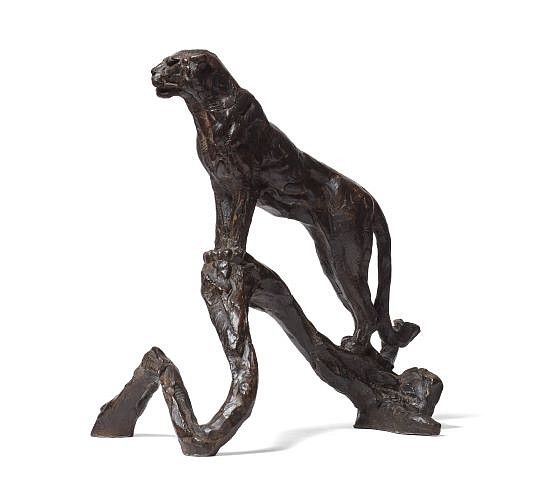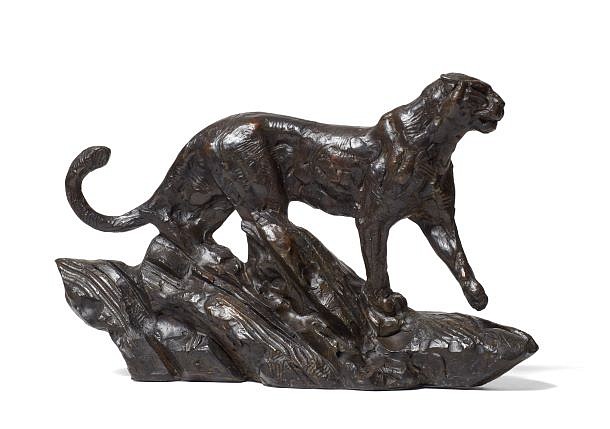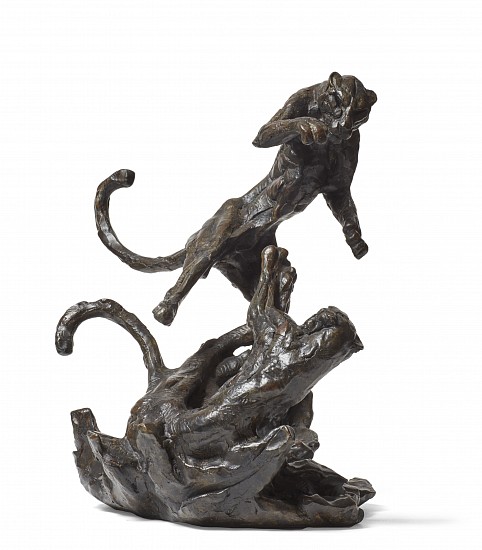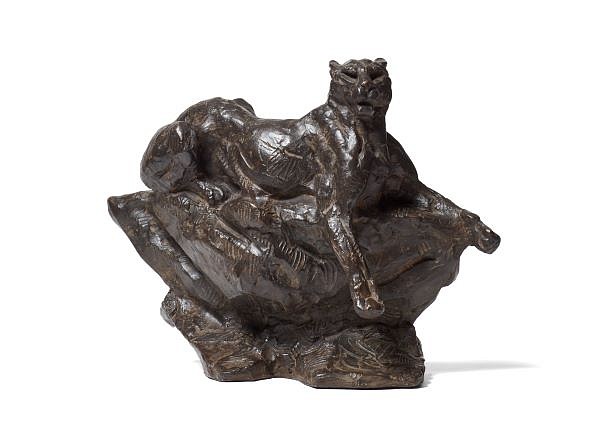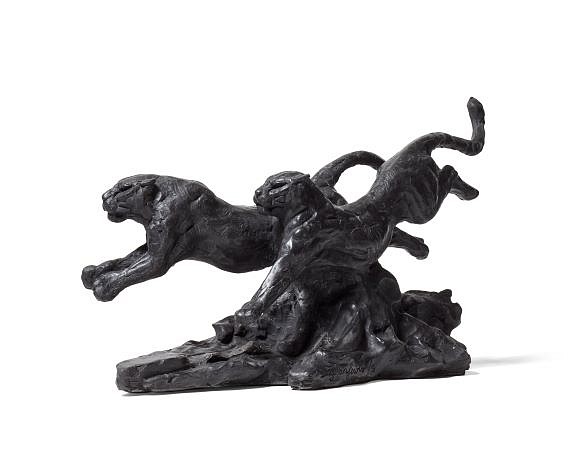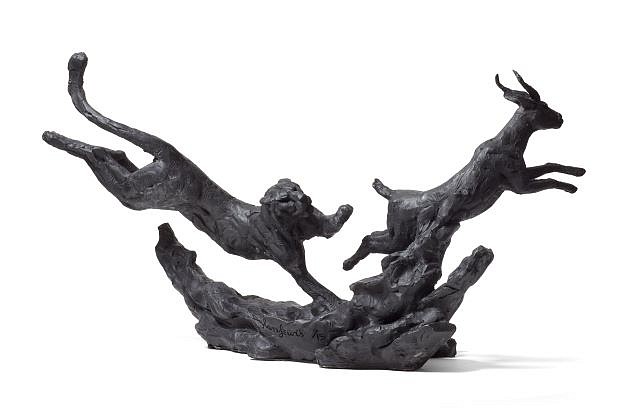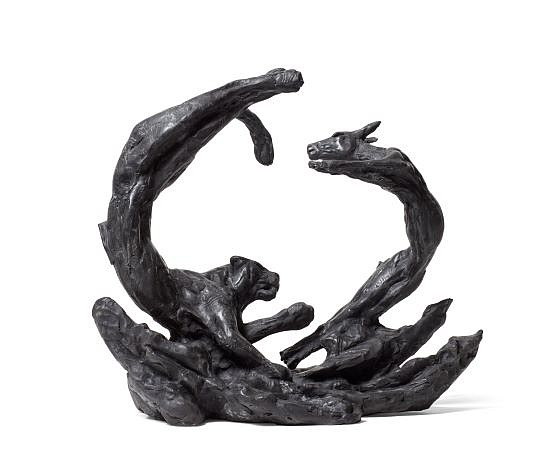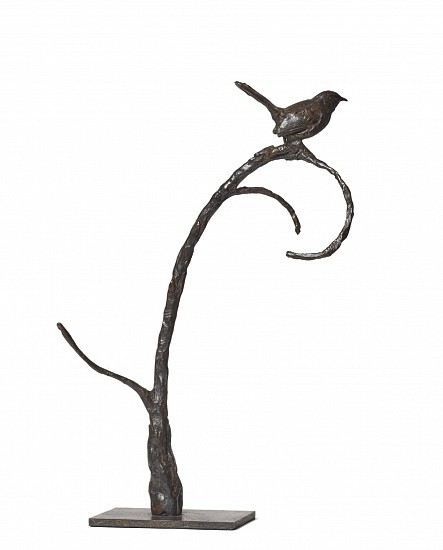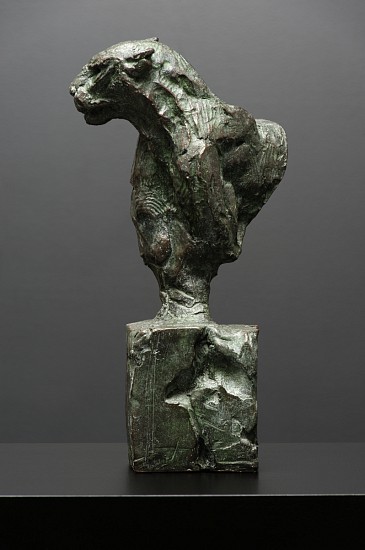DYLAN LEWIS
Dylan Lewis is Africa’s most internationally renowned living figurative sculptor. Collectively Lewis’ bronzes of felines form perhaps the most powerful commentary on nature and wilderness that has been made by any artist of this era. Whilst his cat sculptures have attracted collectors’ attention, Lewis has gradually shifted vision and focus onto the human figure. Elements of humanity began to be hinted at in some early sculptures in the artists development. A growing body of recent work featuring highly charged emotional and erotic human forms now dominate much of this fascinating sculptor’s work.
The initial manifestation of Dylan Lewis’s Chthonios – a striking image of a maelstrom of forms – emerged following a six-year period of intense self-discovery. Perfectly encompassing the themes of self-actualisation, struggles within human relationships, and striving for liberation from harmful internalised indoctrination, the work concretises the turbulence of human emotions.
During lockdown in 2019, Lewis set to work on producing a monumental incarnation of an earlier work, allowing it to evolve intuitively and organically rather than through exact reproduction. The result is a visceral large-scale sculptural work which recalls Rodin’s magnum opus The Gates of Hell and William Blake’s The Lovers’ Whirlwind. Both of these saw the artists drawing on the evocative imagery of Dante Alighieri’s Divine Comedy, but vehemently eschewing any moralising allegory in favour of celebrating the full spectrum of the human experience in all its complexity. With Chthonios, Lewis extends this striking, chaotic imagery to reflect on the agony and ecstasy of trying to connect with the ‘other’ – both other human beings and with the self.
Chthonios marks a significant culmination in the narratives that have underpinned Lewis’s work from the very beginning: the searching for wholeness and self-actualisation against forced familial, cultural, and social conformity. Lewis captures the sense of the sublime that comes from standing on a precipice and witnessing the tumult. It is a view from the eye of a storm, a reckoning with the prospect of being pummelled by a chaotic maelstrom of human emotions and being unsure of whether it will utterly destroy or bring about the intense desire for wholeness.
The sculpture takes the form of large circular arrangement enclosed within a square. This contrasting of the two shapes recurs throughout a diverse array of mandala traditions in a number of world religions, throughout alchemical symbolism, and even in Jungian analytical psychology. Common throughout these various incarnations is the idea of a circle within a square as a symbol of wholeness or totality, contrasting boundlessness with lucidity. This is exactly what Chthonios represents for Dylan Lewis.
- Adapted from an original text by Tim Leibbrandt
Photo credit: Michael Hall / Artist Portrait: Stella Olivier
Dylan Lewis is Africa’s most internationally renowned living figurative sculptor. Collectively Lewis’ bronzes of felines form perhaps the most powerful commentary on nature and wilderness that has been made by any artist of this era. Whilst his cat sculptures have attracted collectors’ attention, Lewis has gradually shifted vision and focus onto the human figure. Elements of humanity began to be hinted at in some early sculptures in the artists development. A growing body of recent work featuring highly charged emotional and erotic human forms now dominate much of this fascinating sculptor’s work.
Dylan Lewis is Africa’s most internationally renowned living figurative sculptor. Collectively Lewis’ bronzes of felines form perhaps the most powerful commentary on nature and wilderness that has been made by any artist of this era. Whilst his cat sculptures have attracted collectors’ attention, Lewis has gradually shifted vision and focus onto the human figure. Elements of humanity began to be hinted at in some early sculptures in the artists development. A growing body of recent work featuring highly charged emotional and erotic human forms now dominate much of this fascinating sculptor’s work.
Dylan Lewis is Africa’s most internationally renowned living figurative sculptor. Collectively Lewis’ bronzes of felines form perhaps the most powerful commentary on nature and wilderness that has been made by any artist of this era. Whilst his cat sculptures have attracted collectors’ attention, Lewis has gradually shifted vision and focus onto the human figure. Elements of humanity began to be hinted at in some early sculptures in the artists development. A growing body of recent work featuring highly charged emotional and erotic human forms now dominate much of this fascinating sculptor’s work.
Dylan Lewis is Africa’s most internationally renowned living figurative sculptor. Collectively Lewis’ bronzes of felines form perhaps the most powerful commentary on nature and wilderness that has been made by any artist of this era. Whilst his cat sculptures have attracted collectors’ attention, Lewis has gradually shifted vision and focus onto the human figure. Elements of humanity began to be hinted at in some early sculptures in the artists development. A growing body of recent work featuring highly charged emotional and erotic human forms now dominate much of this fascinating sculptor’s work.










































































































